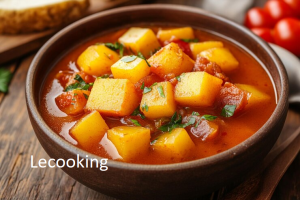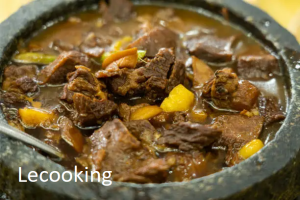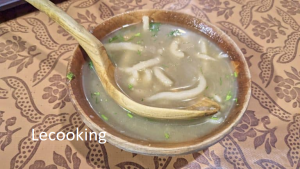Title: The Comforting Heft of the Highlands: A Simple Guide to Yak Stew
In the high-altitude regions where oxygen thins and landscapes stretch into the clouds, one animal thrives where most would falter—the yak. Sturdy, sure-footed, and remarkably resilient, yaks are central to the lives of the Himalayan people. Beyond their use as pack animals and sources of wool and milk, yaks have also sustained mountain communities with their meat, often in the form of hearty yak stew.
Yak stew isn’t just a meal—it’s a warming tradition, a culinary bridge between survival and savor. In this article, we’ll explore the roots of this unique dish, its nutritional benefits, and provide a simple yet authentic recipe to make yak stew at home—even if you’re not living 15,000 feet above sea level.
A Brief History of Yak Cuisine
Yaks (Bos grunniens), native to the Tibetan Plateau, have been domesticated for over 4,000 years. Traditionally raised in Tibet, Nepal, Bhutan, Mongolia, and parts of northern India and China, yaks provide a dependable source of meat, milk, fiber, and transport.
For centuries, Himalayan communities have relied on yak meat for sustenance during harsh winters when farming is impossible. Yak stew, often prepared with root vegetables and mountain herbs, has served as a vital, nourishing staple. Though still a traditional food in these areas, it has begun to gain attention in gourmet and adventure food circles around the world.
Why Yak? The Meat with a Difference
Nutritional Benefits
Yak meat is a nutritional powerhouse. Compared to beef, yak meat is:
-
Lean: It contains less fat, especially saturated fat.
-
High in Protein: Essential for muscle building and repair.
-
Rich in Omega-3s: Unlike grain-fed cattle, yaks that graze naturally produce meat with higher omega-3 fatty acids.
-
Iron-Rich: Crucial for energy and blood health.
-
Lower in Cholesterol: Better suited for heart health.
It’s a cleaner protein, both in taste and in its ecological footprint. Yaks graze on wild herbs and grasses, needing no processed feed or antibiotics.
Cultural Significance
For Himalayan peoples, yak stew is more than food—it’s a part of ritual and community. In Tibet, yak meat may be stewed for Losar (Tibetan New Year) celebrations or shared communally during winter festivals. In Nepal, it often appears on the menu in remote teahouses along the Annapurna or Everest trekking routes. Each village, each household might have its own variation: some fiery with chilies, others mellow with milk or butter added for richness.
Yak stew reflects the land it comes from—earthy, robust, and honest.
Challenges and Curiosity Beyond the Himalayas
Yak meat isn’t widely available globally, but interest in exotic meats has grown. In parts of the U.S., Canada, and Europe, yak is now farmed in small numbers, especially by regenerative agriculture enthusiasts. If you live in a region where yak meat is hard to find, many of the same principles of yak stew can apply to lean grass-fed beef or bison.
Still, if you can source yak, it’s worth the effort. The flavor is clean, slightly sweet, with a faint gaminess that adds character without overpowering.
Simple Yak Stew Recipe: Home-Style and Hearty
Prep Time: 25 minutes
Cook Time: 2 to 2.5 hours
Serves: 4-6
Ingredients
-
1.5 lbs (700g) yak stew meat, cut into 1-inch cubes
-
2 tbsp oil or yak butter (if available)
-
1 large onion, chopped
-
3 cloves garlic, minced
-
1 tbsp ginger, minced
-
3 carrots, sliced
-
2 potatoes, cubed
-
1 cup chopped turnip or radish (optional but traditional)
-
1 tsp ground cumin
-
1 tsp ground coriander
-
1/2 tsp turmeric (optional, for color and depth)
-
1/2 tsp chili flakes (adjust to taste)
-
1 bay leaf
-
4 cups beef or bone broth (yak bone broth if you’re authentic!)
-
Salt and pepper to taste
-
Fresh cilantro or green onions, for garnish
Instructions
-
Brown the Yak Meat
In a large pot or Dutch oven, heat oil over medium-high heat. Brown the yak meat in batches so it sears rather than steams. Set aside once browned. -
Sauté the Aromatics
In the same pot, add chopped onions. Sauté until translucent, about 5 minutes. Add garlic and ginger, and cook for another 2 minutes until fragrant. -
Spice it Up
Add cumin, coriander, turmeric, and chili flakes to the pot. Stir for 30 seconds to bloom the spices. -
Deglaze and Simmer
Return the yak meat to the pot, add bay leaf, and pour in the broth. Bring to a gentle boil, then lower to a simmer. Cover and cook for about 1.5 hours, stirring occasionally. -
Add the Vegetables
Add carrots, potatoes, and turnips. Cook for another 30–40 minutes until vegetables and meat are tender. -
Season and Serve
Adjust salt and pepper. Garnish with chopped cilantro or green onions. Serve hot with steamed rice, flatbread, or tsampa (roasted barley flour, a Tibetan staple).
Variations and Twists
-
Creamy Yak Stew: Add a splash of yak milk or cream in the last 10 minutes of cooking.
-
Spicy Nepalese Style: Add more chili, and a bit of ground Sichuan pepper for heat and numbness.
-
Thukpa Fusion: Add noodles and a bit more broth to transform it into a yak noodle soup.
Cooking Tips for Yak Meat
-
Don’t Overcook Early: Yak is lean, so searing quickly and then simmering slowly helps retain moisture.
-
Low and Slow Wins: Patience yields tender meat and a deep-flavored stew.
-
Acidity Helps: A splash of vinegar or tomato can tenderize the meat, though many traditional recipes keep it simple.

Serving Suggestions
-
Tsampa: Roasted barley flour mixed with tea or broth is often eaten alongside yak dishes in Tibet.
-
Rice or Flatbread: Either balances the richness of the stew.
-
Fermented Vegetables: A small side of spicy pickled radish or cabbage cuts through the heaviness.
Sustainability and Ethical Considerations
Yak farming is largely small-scale and pasture-based. It aligns with principles of sustainable agriculture: low input, high respect for ecosystems, and cultural continuity. When sourcing yak meat, choose farms or cooperatives that support ethical treatment and traditional herding communities.
In western countries, look for yak meat from ranchers focused on regenerative practices. Supporting these farms helps protect genetic diversity in livestock and uplifts sustainable meat consumption.
Closing Thoughts: A Bowl of Story and Survival
Yak stew is more than a regional delicacy. It’s a cultural emblem, a survival food turned soulful comfort. Whether you’re a culinary explorer or someone longing for a taste of the mountains, making yak stew is a journey into the warmth of a distant world.
The simplicity of the ingredients, the depth of flavor, and the centuries of tradition in every spoonful connect you with people who have braved windswept peaks and made homes among the stars. And even if you’re cooking it in a city kitchen, with a gentle simmer and a little patience, you can recreate the hearty, humble magic of yak stew.
